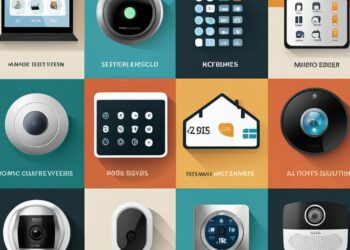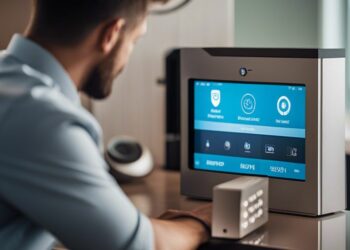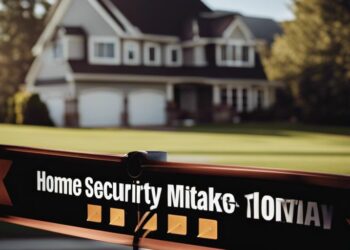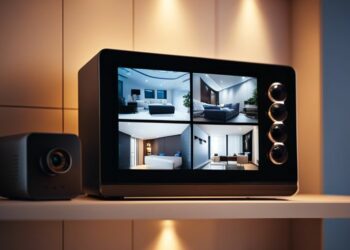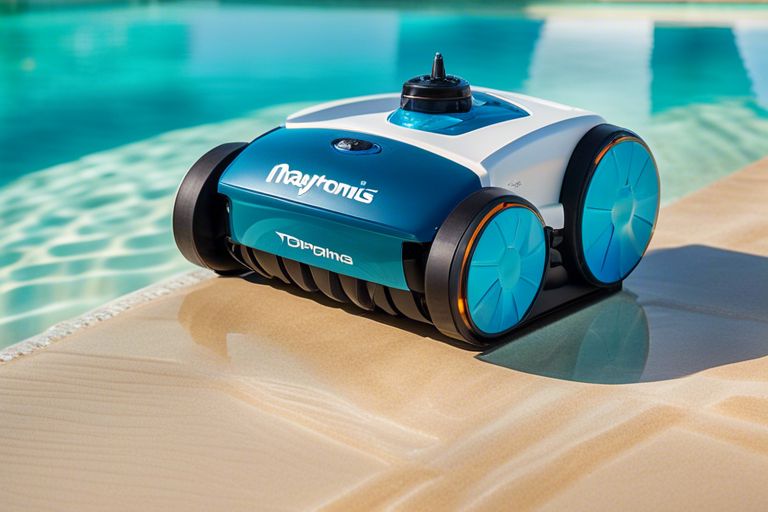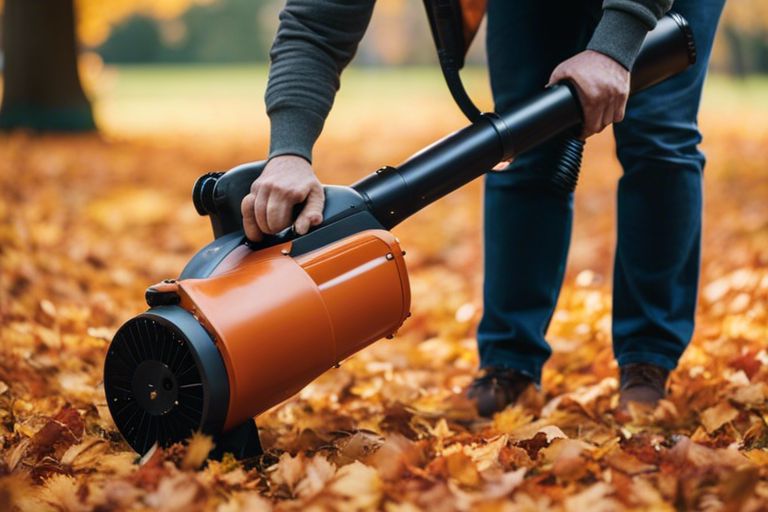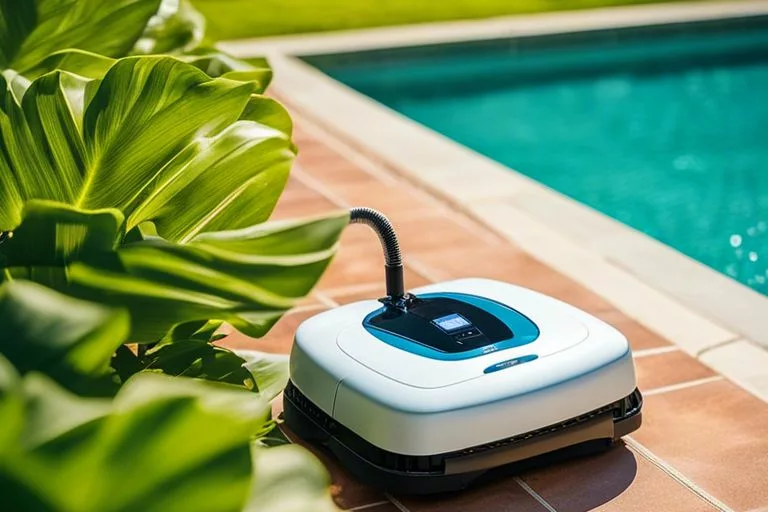With the rise in security concerns, it is crucial to ensure your security system is operating at its best. By following some key tips and best practices, you can maximize the effectiveness of your security setup and protect your home or business. From regular maintenance checks to strategic placement of cameras and sensors, these simple yet effective strategies will help you enhance the security of your property. Let’s investigate into some actionable steps to boost the performance of your security system and maintain peace of mind.
Contents
- 1 Assessing Your Current Security System
- 2 Setting Clear Goals and Objectives
- 3 Choosing the Right Security Equipment
- 4 Effective Alarm System Configuration
- 5 Strategic Placement of Security Devices
- 6 Enhancing Outdoor Security
- 7 Securing Doors and Windows
- 8 Implementing Access Control Measures
- 9 Monitoring and Response Strategies
- 10 Cybersecurity Considerations for IP-Based Systems
- 11 Regular Maintenance and Testing
- 12 Training and Awareness for Users
- 13 Integrating with Other Safety Measures
- 14 Conclusion
- 15 FAQ
Assessing Your Current Security System
Identifying Vulnerabilities
For optimal security, it is necessary to start by identifying vulnerabilities in your current security system. Conduct a thorough assessment of your property to pinpoint areas that may be at risk. Look for potential entry points such as doors, windows, and any other areas where intruders could gain access. Additionally, consider factors such as poor lighting, blind spots, or outdated equipment that could compromise the effectiveness of your security measures.
Evaluating Existing Security Measures
To ensure that your security system is robust, evaluating existing security measures is crucial. Review the layout of your property to determine if security cameras are strategically placed to capture key areas. Check the condition of locks, alarms, and sensors to confirm that they are in good working order. It is also beneficial to assess if your security protocols are up-to-date and if your staff are adequately trained to respond to security threats effectively.
A regular review of your security system can help identify any weaknesses or areas that may need improvement. By continuously evaluating your existing security measures, you can stay one step ahead of potential security risks and enhance the overall effectiveness of your security system.
Setting Clear Goals and Objectives
One necessary step in maximizing the effectiveness of your security system is to set clear goals and objectives. This process involves determining your security priorities and establishing key performance indicators (KPIs) to measure the success of your security efforts.
Determining Security Priorities
To ensure that your security system is effective, you must first determine your security priorities. This involves assessing the unique risks and vulnerabilities that your property or business faces. By identifying the areas that require the most attention, you can focus your resources and efforts where they are needed most.
Establishing Key Performance Indicators (KPIs)
To measure the effectiveness of your security system, it is crucial to establish key performance indicators (KPIs). These KPIs will help you track and evaluate the success of your security measures over time. By setting specific metrics to monitor, such as response times, incident resolution rates, and false alarm frequencies, you can ensure that your security system is meeting your objectives.
Clear KPIs provide a measurable way to assess the performance of your security system and make data-driven decisions to improve its effectiveness. Regularly reviewing these indicators will allow you to identify areas for improvement and make adjustments to enhance the overall security of your property or business.
Choosing the Right Security Equipment
Any effective security system starts with choosing the right equipment tailored to your specific needs. From cameras to sensors, each component plays a crucial role in keeping your property safe and secure.
Cameras: Types and Placement Strategies
- Dome Cameras
- PTZ Cameras
- Bullet Cameras
- Wireless Cameras
- Indoor vs. Outdoor Cameras
The placement of cameras is key to maximizing their effectiveness. Ensure they cover entry points, blind spots, and high-traffic areas. The right type and placement of cameras can deter potential intruders and provide valuable evidence in case of a security breach.
Sensors: Motion, Glass Break, and Smoke Detectors
One imperative aspect of a robust security system is incorporating various sensors such as motion detectors, glass break sensors, and smoke detectors. These sensors can alert you to potential threats and emergencies, allowing you to take prompt action to mitigate risks.
Placement of sensors is crucial for their optimal functioning. Motion detectors should be strategically placed near entry points and valuable assets. Glass break sensors should cover vulnerable areas such as windows, while smoke detectors need to be installed in key areas throughout the property to ensure early detection of fires.
Effective Alarm System Configuration
Not all alarm systems are created equal, and the key to maximizing the effectiveness of your security system lies in its configuration. By customizing your alarm settings and ensuring they are tailored to your specific needs, you can enhance the overall security of your property.
Customizing Alarm Settings for Optimal Response
With a wide range of features and settings available on modern alarm systems, it is vital to take the time to customize them for optimal response. Consider factors such as the size and layout of your property, the number of entry points, and the level of security required. By adjusting settings such as entry delay times, sensor sensitivity, and alarm duration, you can ensure that your system is fine-tuned to detect and respond to potential threats effectively.
Avoiding False Alarms and Nuisance Trips
On occasion, false alarms or nuisance trips can occur if the alarm system is not appropriately configured or maintained. These can not only be frustrating but can also lead to a decreased response from local authorities if they become frequent. To avoid false alarms and nuisance trips, make sure to regularly test your system, replace batteries as needed, and address any issues promptly to keep your security system running smoothly.
False alarms can also be triggered by pets, drafts, or even the movement of objects near motion sensors. To prevent these false alarms, consider positioning sensors carefully and adjusting their sensitivity levels. Additionally, training pets to avoid certain areas where motion sensors are present can help minimize false alarms caused by their movements.
Strategic Placement of Security Devices
Now let’s talk about the strategic placement of security devices in order to maximize the effectiveness of your security system. This includes placing cameras and sensors in optimal locations to ensure comprehensive coverage of your property.
Camera Angles and Field of View
To ensure that your security cameras are effective, it is crucial to pay attention to the angles at which they are placed and their field of view. Cameras should be strategically positioned to cover entry points such as doors and windows, as well as vulnerable areas of your property. Make sure there are no blind spots where intruders could potentially enter undetected. Adjust the tilt and rotation of the cameras to maximize their coverage and eliminate any obstructions that could hinder their effectiveness.
Sensor Placement for Maximum Coverage
Angles are crucial when it comes to placing sensors for maximum coverage. Motion sensors should be installed at angles that cover the widest possible area without being triggered by normal activities within your home. Consider placing sensors in hallways, staircases, and other common areas where intruders are likely to pass through. By strategically placing sensors, you can ensure that all entry points are adequately covered and any suspicious activity is detected promptly.
Sensors should be placed at different heights to cover both the upper and lower levels of your home. This multi-level coverage ensures that no area is left unprotected, providing you with comprehensive security monitoring.
Enhancing Outdoor Security
Once again, when it comes to maximizing the effectiveness of your security system, focusing on outdoor security measures is crucial. Enhancing the security of your outdoor space not only acts as a deterrent to potential intruders but also provides an added layer of protection for your property.
Perimeter Fencing and Gate Security
Enhancing the security of your perimeter fencing and gate systems can significantly improve the overall security of your property. Make sure to regularly inspect and maintain your fencing to ensure there are no weak spots or areas that can be easily breached. Additionally, consider installing security cameras and motion sensors along the perimeter to detect any suspicious activity.
Outdoor Lighting Strategies for Deterrence
Outdoor lighting is a powerful deterrent against intruders, as it eliminates dark areas where potential threats can hide. Consider installing motion-activated lights around the perimeter of your property, as well as near entry points such as doors and windows. This not only helps deter intruders but also provides visibility for security cameras to capture any unusual activity.
With strategically placed outdoor lighting, you can create a well-lit environment that enhances the overall security of your property. In addition to deterring intruders, outdoor lighting also helps improve visibility for residents and guests, reducing the risk of accidents or falls in dark areas.
Securing Doors and Windows
Keep your home safe and secure by implementing the right strategies to protect your doors and windows. These entry points are often targeted by intruders, making it crucial to invest in robust security measures.
Door Hardware and Locking Mechanisms
Door hardware and locking mechanisms play a vital role in ensuring the safety of your home. Make sure to install high-quality deadbolts and strike plates on all exterior doors. Reinforce the door jambs to prevent them from being kicked in easily. Consider upgrading to smart locks that provide advanced security features such as keyless entry and remote monitoring.
Window Security Film and Glazing Options
The installation of window security film and glazing options can significantly enhance the security of your home. Security films are designed to strengthen windows, making them more resistant to break-ins. They can also help protect against severe weather and reduce the risk of shattering. Consider installing laminated glass or tempered glass for added protection against forced entry.
Window security film and glazing options not only improve the security of your home but also provide additional benefits such as UV protection and increased energy efficiency. By investing in these upgrades, you can enhance the overall safety and functionality of your windows.
Implementing Access Control Measures
Biometric Authentication and Smart Cards
After installing a security system, it is crucial to implement access control measures to enhance its effectiveness. An advanced method is using biometric authentication and smart cards to control entry into sensitive areas. Biometric authentication systems, such as fingerprint or retina scanners, provide a high level of security by verifying a person’s unique biological traits before granting access. Smart cards containing encrypted data can also be used to restrict entry to authorized personnel only.
Electronic Door Strikes and Magnetic Locks
With electronic door strikes and magnetic locks, you can further secure your premises by controlling who can enter and exit specific areas. These devices can be integrated into your security system to allow remote access control, granting or restricting entry with a simple click. The electronic door strikes release the door latch electronically, while magnetic locks use magnetic force to secure the door shut. Both solutions offer convenience and added security to your access control system.
The use of electronic door strikes and magnetic locks allows for efficient control over access points, minimizing the risk of unauthorized entry. By integrating these mechanisms into your security system, you can easily manage access rights and monitor entry and exit activities for enhanced security protocols.
Monitoring and Response Strategies
Central Station Monitoring vs. Self-Monitoring
Despite the initial cost difference, opting for central station monitoring can provide added peace of mind and a higher level of security for your property. With central station monitoring, trained professionals are available 24/7 to respond to any alarms triggered by your security system. They can quickly assess the situation and dispatch the appropriate authorities if needed. On the other hand, self-monitoring requires you to be constantly vigilant and available to respond to any alerts, which may not always be feasible.
Response Protocols for Different Alarm Scenarios
For an effective security system, it’s crucial to have well-defined response protocols in place for different alarm scenarios. Whether it’s a break-in, fire, or medical emergency, knowing how to react quickly and efficiently can make all the difference in mitigating potential threats. Assign specific roles and responsibilities to household members or employees, establish communication channels, and conduct regular drills to ensure everyone is prepared to respond effectively in case of an emergency.
Alarm response protocols should be tailored to the unique layout and needs of your property. For example, response procedures for a residential property may differ from those of a commercial establishment. Take into consideration factors such as the number of entry points, the presence of valuables, and the level of foot traffic when developing your response protocols.
Cybersecurity Considerations for IP-Based Systems
Network Security Best Practices
Your security system is only as strong as its network connections. To maximize the effectiveness of your IP-based security system, ensure that you implement robust network security best practices. This includes setting up firewalls, using encrypted connections, regularly updating passwords, and monitoring network traffic for any unusual activity. By following these practices, you can greatly reduce the risk of unauthorized access to your security system.
Protecting Against Hacking and Data Breaches
IP-based security systems are vulnerable to hacking and data breaches if not properly secured. Systems that are connected to the internet are especially at risk. To protect against such threats, consider implementing measures such as multi-factor authentication, regular security audits, and using VPNs for remote access. It is crucial to stay informed about the latest cybersecurity threats and to update your system accordingly to mitigate any potential risks.
Best
One of the best ways to protect your IP-based security system against hacking and data breaches is to regularly patch and update all system components. This includes the firmware of your cameras, recorders, and any other devices connected to the network. By staying current with updates, you can close any known security vulnerabilities and ensure that your system remains secure against potential threats.
Regular Maintenance and Testing
Unlike a set-it-and-forget-it appliance, your security system requires regular maintenance and testing to ensure it is functioning optimally. Neglecting to perform routine checks can leave your home or business vulnerable to security breaches or system failures. By staying proactive with maintenance and testing, you can maximize the effectiveness of your security system and provide peace of mind.
Scheduling Routine System Checks
To keep your security system in top shape, it’s necessary to schedule routine checks. Set a regular cadence, whether monthly or quarterly, to inspect all components of the system. Test alarms, cameras, sensors, and other features to ensure they are working correctly. Take note of any issues or malfunctions during these checks and address them promptly to prevent any vulnerabilities.
Troubleshooting Common Issues and Errors
Troubleshooting common issues and errors is an important aspect of maximizing the effectiveness of your security system. Familiarize yourself with the user manual or contact your security provider for guidance on resolving common problems. From connectivity issues to sensor malfunctions, being able to troubleshoot effectively can save you time and ensure continuous protection for your property.
Issues:
Common issues that may arise include false alarms, poor camera quality, or sensors not detecting movement. By learning how to troubleshoot these issues, you can minimize disruptions to your security system and address potential vulnerabilities promptly. Don’t overlook the importance of troubleshooting, as it can make a significant difference in the overall performance of your security system.
Training and Awareness for Users
Educating Users on System Operation and Response
Many security breaches occur due to user error or lack of understanding of how the security system functions. It is crucial to educate all users on how to operate the security system effectively and how to respond in case of an emergency. This includes knowing how to arm and disarm the system, recognizing alarm signals, and understanding proper emergency procedures.
Conducting Regular Drills and Exercises
Users must be familiar with the security protocols and procedures through regular drills and exercises. By simulating various security scenarios, users can practice their response and ensure they are prepared in case of a real threat. Regular drills also help identify any gaps in security measures or areas that may need improvement.
For instance, conducting fire drills not only ensures users know how to evacuate the building safely but also tests the functionality of fire alarms and emergency exits. By practicing these drills regularly, users can feel more confident and capable in responding to emergencies.
Integrating with Other Safety Measures
Fire Alarm Systems and Emergency Response
For optimal safety, integrating your security system with fire alarm systems and emergency response procedures is crucial. By linking these systems together, you can ensure a rapid and coordinated response in the event of a fire or other emergency. Make sure your security system is equipped to detect smoke and heat, and that it can automatically trigger alarms and notify emergency services when necessary.
Environmental Monitoring and Hazard Detection
Environmental monitoring plays a significant role in ensuring the safety and security of your premises. By integrating environmental sensors with your security system, you can detect hazards such as flooding, extreme temperatures, or gas leaks. This proactive approach allows you to address potential threats before they escalate, minimizing damage and keeping occupants safe.
Environmental monitoring and hazard detection are necessary components of a comprehensive security plan. By monitoring environmental conditions in real-time and integrating this data with your security system, you can enhance your ability to prevent accidents and respond swiftly to emergencies.
Integrating your security system with other safety measures such as fire alarm systems and environmental monitoring not only enhances the overall effectiveness of your security strategy but also ensures a more comprehensive approach to safeguarding your property and its occupants.
Conclusion
From above-mentioned tips, it is clear that maximizing the effectiveness of your security system requires a combination of strategic placement, regular maintenance, and staying informed about the latest technologies and trends in security. By implementing these tips, you can enhance the protection of your home or business and ensure a greater sense of safety and security for yourself and your loved ones. Recall, a well-maintained security system is only as strong as its weakest component, so be diligent in your efforts to keep it functioning optimally.
Ultimately, investing time and resources into your security system will pay off in the long run by providing peace of mind and potentially deterring criminal activity. By following these tips and staying proactive in managing your security system, you can better safeguard your property and assets, creating a secure environment for all who enter your premises.
FAQ
Q: What are the key tips for maximizing the effectiveness of your security system?
A: To maximize the effectiveness of your security system, consider these key tips:
- Invest in high-quality cameras and sensors
- Regularly update firmware and software
- Integrate your security system with smart home technology
- Ensure proper installation and placement of security devices
- Perform routine maintenance and testing
Q: How can investing in high-quality cameras and sensors improve the effectiveness of your security system?
A: High-quality cameras and sensors offer better resolution, wider coverage, and more accurate detection capabilities. This allows you to capture clear images and videos, monitor a larger area, and receive reliable alerts, enhancing the overall security of your property.
Q: Why is it important to integrate your security system with smart home technology?
A: Integrating your security system with smart home technology enables you to control and monitor your security devices remotely through a mobile app or voice commands. This level of accessibility and automation not only enhances convenience but also strengthens the security of your home by enabling real-time alerts and actions.

